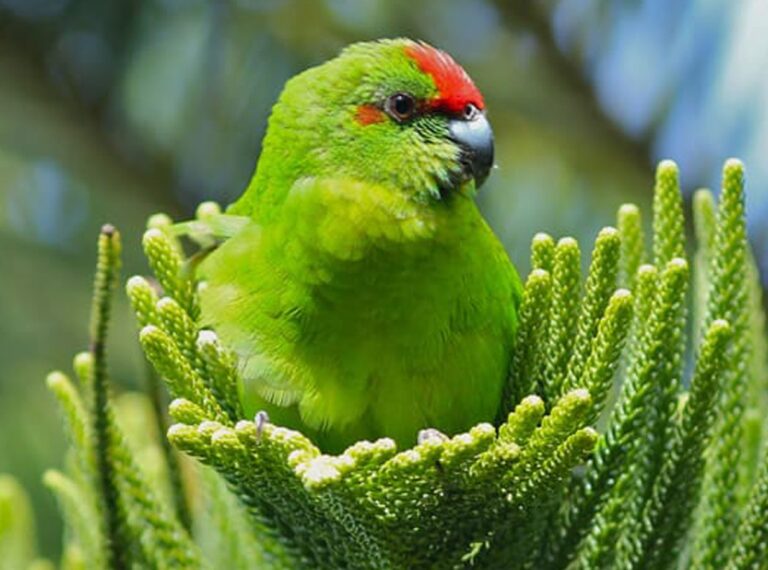This project is a first step to revegetating Norfolk Island. TierraMar is partnered with the Invasive Species Council for restoring Norfolk Island Ecosystems. We are helping the community to identify and prioritise actions for its recovery. Any contribution you make, will restore the island’s ecosystems, save its endangered species and improve the economy. There are three projects ready to receive funding.
A clear picture of what Norfolk Island looked like before European arrival has emerged from a project that has, for the first time ever, mapped native vegetation across the entire island, as it exists now and before 1750.
How the project to revegetate Norfolk Island came about
“Over two years we worked with local and mainland experts to create digital maps of what Norfolk Island’s forests, woodlands and grasslands looked like before Europeans arrived on the island, and what that landscape looks like now,” Invasive Species Council CEO Andrew Cox said.
“Our detailed analysis included searching through old photo and illustration archives, extensive field work, interviews with locals about remnant native plant communities and flying aerial drones across the island to map out the current landscape.
“The project has unlocked a map that can now be used to help Norfolk Islanders replant and restore many of the threatened native plants and plant communities that are under pressure from weeds and past habitat loss.”
These maps provide a vital resource for planning effective conservation, restoration and management of the remaining native vegetation.”
There are about 180 native plant species on Norfolk Island, of which about a quarter are found nowhere else on the planet and 46 are listed as threatened.
Native plant communities of Norfolk Island
Another 430 plant species have been introduced to the island, some have become environmental weeds that have pushed out native species. Past land management has also pushed many native plant species into small, fragmented pockets of remnant vegetation.
Tara Patel is Senior Environmental Officer at Norfolk Island Regional Council and works closely with the local community replanting and restoring native habitat.
“Norfolk Island’s plant communities have evolved in relative isolation over 2.5 to 3 million years, creating a landscape rich in native plant and animal species,” said Ms Patel.
“The island is home to the world famous Norfolk Island Pine and a substantial number of our native species are found nowhere else on Earth, including 43 plants and 15 bird species, including the critically endangered Norfolk Island green parrot.
“Norfolk Island has a fascinating human history and an incredibly rich natural heritage, but past land management and the introduction of non-native species has put huge pressures on our natural landscape. These maps provide a vital resource for planning effective conservation, restoration and management of the remaining native vegetation.”
Nature-based solutions and mapping Norfolk Island’s native plants
Dr Ray Nias, director at TierraMar, says an 1804 drawing by Ferdinand Bauer gives a very clear indication of what Norfolk Island looked like 200 years ago.
“The illustration by Ferdinand Bauer shows Norfolk Island with dense, thick forest cover stretching as far as the eye can see,” Dr Nias said.
“Hardwood forest covered most of the island’s hinterland and pines could be found in coastal areas and along mountain ridges.
“There has been a real push by the Norfolk Island community recently to repair and restore areas that are suffering from weeds and past land management practices.
“These new maps will play a vital role in helping the community restore our rich natural heritage and secure a future for many of our threatened native plants and animals.”
The mapping is based on extensive survey work conducted by Naomi Christian, a Norfolk Islander, and recognised plant ecologist Dr Kevin Mills. This work was completed in 2020. Funding was provided through the Eldon and Anne Foote Trust, administered by the Lord Mayor’s Charitable Foundation, the Commonwealth Department of Infrastructure, Transport, Regional Development and Communications, and supported by the Norfolk Island Regional Council.
Facts about revegetating Norfolk Island
- The new maps describe and map 14 native plant communities across the island and will help land managers protect and restore habitat for threatened species and other wildlife of Norfolk Island.
- Some 3 million years ago a volcano erupted in the southern Pacific Ocean on a ridge of the largely submerged continent of Zealandia. The lava that flowed from multiple eruptions over the next 700,000 or so years built up into a mountain that emerged from the sea. Thus was born land far from any other land mass, the Norfolk Island group.
- A native plant community is a distinct association of native plants that grow together, as determined by environmental factors including moisture availability, maritime influence, aspect, prevailing winds and soil characteristics.
Resources
Download the Native Plant Communities of Norfolk Island Report (2021):
Report-Plant Communities of Norfolk Island-2021.pdf
Download the Fact Sheets for Norfolk Island native plant communities:
Fact sheet 1-Moist Palm Valley Forest.pdf
Fact sheet 2-Moist Upland Hardwood Forest.pdf
Fact sheet 3-Pine–Hardwood Ridge Forest.pdf
Fact sheet 4-Viny Hardwood Forest.pdf
Fact sheet 5-Plateau Hardwood Forest.pdf
Fact sheet 6-Lowland Valley Hardwood Forest.pdf
Fact sheet 7-Sheltered Coastal Forest.pdf
Fact sheet 8-Coastal Pine and White Oak Forest.pdf
Fact sheet 9-Coastal White Oak Shrubland.pdf
Fact sheet 10-Sandy Beach Herbland.pdf
Fact sheet 11-Coastal Grassland.pdf
Fact sheet 12-Moo-oo Sedgeland.pdf
Fact sheet 13-Coastal Flax Community.pdf
Fact sheet 14-Freshwater Swamp.pdf
Fact sheet 15-The native plant communities of Norfolk Island.pdf
